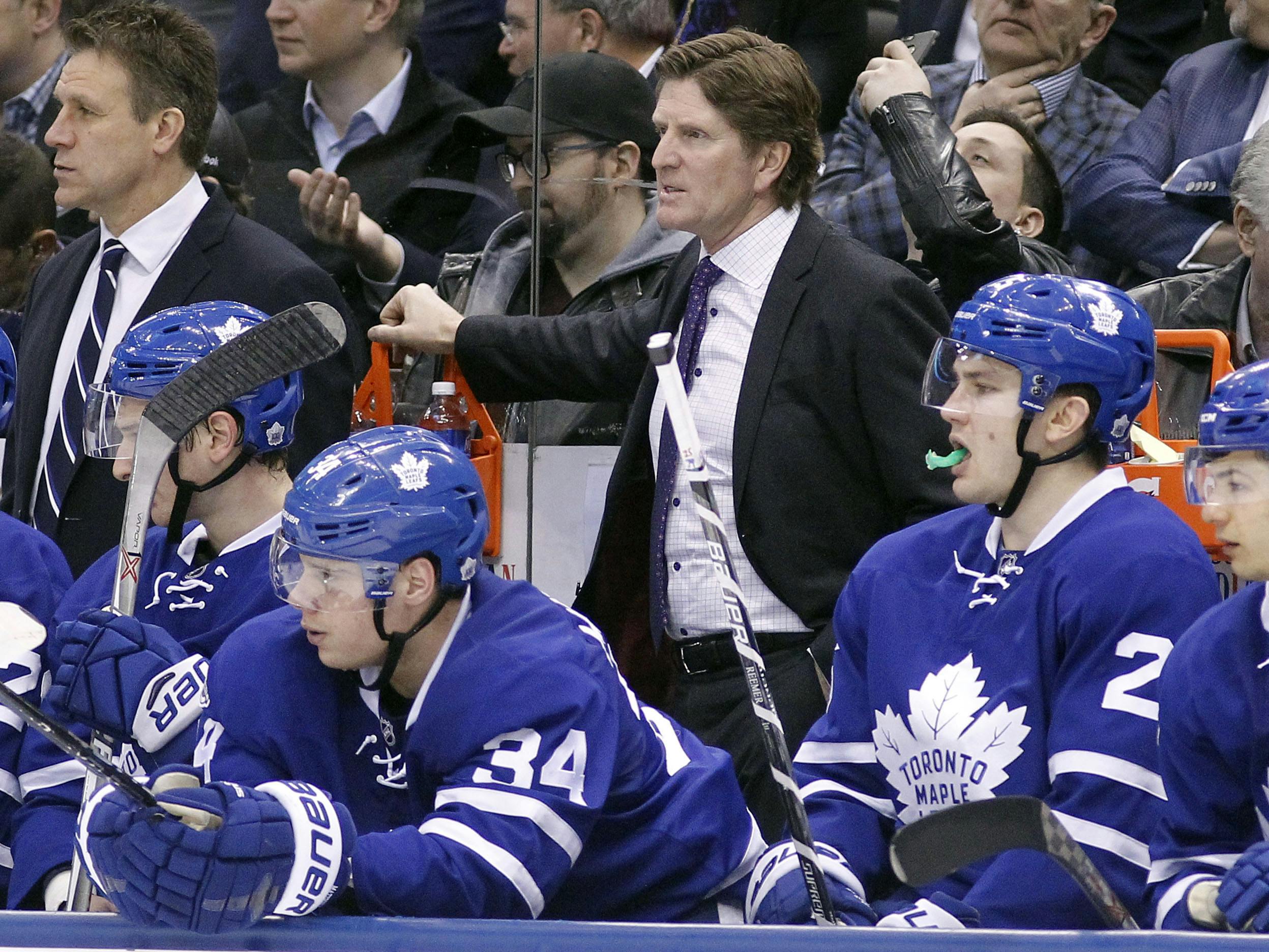Taking Inventory: Leafs’ Hot Streaks, Cold Streaks, and Strength of Schedule Arguments

By ThatsKappy
6 years agoTwo weeks ago, the Toronto Maple Leafs were coming off of a 6-3 loss to the Ottawa Senators. It was a frustrating game, but Leafs fans were still riding the high off of the team’s early successes.
What a difference a couple of weeks has made.
After getting off to a hot 6-1-0 start, the Leafs have dropped six of their last eight games, falling to a much more mortal 8-7-0 on the season. To make matters worse, a road trip that could have served as a confidence boost and an opportunity to get back on track ended up being a disaster, with the Leafs going 1-3-0 through California and in St. Louis, rounding out a stretch that has seen them go 2-6-0 over the last two weeks.
The season thus far has been a tale of highs and lows, with a hot start giving way to a frustrating stretch of losses. It’s understandable that many fans, scarred by past disappointments, are worried about what’s to come.
This piece is intended to serve as an opportunity to step back and examine the Leafs’ season thus far; to examine both of the Leafs’ hot start and recent cold streak as reasonable as possible. To take inventory, so to speak, on the Leafs’ performances and the strength of their schedule, before turning our eyes to the road ahead.
A Tale Of Two Seasons

stats courtesy of hockey-reference.com
In the early going, the Leafs were absolutely lighting teams up, outscoring their opponents 34-22 through their first seven games. In that span, the Leafs averaged 4.85 goals per game, while shooting at a sky-high 15.1%. An inarguably unsustainable pace, in other words, even for a team with an above-average offensive prowess.
The glaring issue in the Leafs’ early success was that their offensive performances were strong enough to mask their abysmal defensive efforts. Averaging 3.14 goals against per game while Frederik Andersen and Curtis McElhinney sported a joint 89.8 save percentage, the Leafs’ inability to keep the puck out of their own net should have been a red flag from the get-go, but were masked by the fact that they were shooting out the lights night after night.
Unfortunately, those issues did begin to catch up with them. Enter the most recent eight games:

stats courtesy of hockey-reference.com
The Leafs’ struggles in their most recent stretch of games has been a result of three primary factors. First, the Leafs’ possession numbers have dipped much lower, with only half of their games being above a 50% CF, as compared to their early stretch in which 5/7 of their games were above 50%. Second, there has been a noticeable drop in shooting percentage, from 15.1% down to 9.57% (for perspective, the Leafs last season shot at a 9.6%, per Hockey-Reference). In the case of shooting percentage, it’s been a drop down to a number that is likely more sustainable than their previous figures. Contrast this with the third factor — the fact that the team’s save percentage has yet to rise after a slow start — and we’re likely left with a case where one side of the team’s numbers (shooting percentage) has begun to fall back into normal range before their save percentage has.
Like the Leafs’ shooting percentage in their earlier winning stretch, the defensive numbers are unlikely to sustain themselves at such a low clip. Frederik Andersen, while not elite, is at the very least a capable NHL starter with league-average numbers (.916 on his career) that will likely bounce back sooner rather than later. As for improving their possession numbers, two of the three games since Babcock began rolling more balanced, skill-first lines have seen those numbers increase to significantly above the 50% clip, though they were also abysmally low in St. Louis on Saturday night. A convincing case could be made about small sample size, but at the very least a case could also be made for renewed optimism in that department.
The Case For Strength Of Schedule Arguments
One argument that’s been tossed around in the last week or so has been that the Leafs’ schedule has been particularly tough to start this season. It seemed to be an argument that warranted a closer look, considering stretches of facing uncharacteristically tough teams do make a difference.
There are a few different metrics out there for determining Strength of Schedule, but the information around these metrics is fairly minimal. ESPN, for example, provides Strength of Schedule (SOS) metrics in their Relative Power Index (RPI) ratings. RPI is a method of ranking teams that weighs a combination of team’s winning percentages, the winning percentage of their opponents, and the winning percentage of their opponent’s opponents. The resulting numbers are meant to be a better representation of team’s performances that takes into account the strength of their opponents.
According to ESPN’s RPI system, the Leafs rank 9th in the NHL in terms of their performance compared to the strength of their opponents. ESPN also provides a separate metric that ranks Strength of Schedule alone, which posits that the Leafs have had the fifth-toughest schedule thus far this season. Their method by which this Strength of Schedule data is derived, however, is nowhere to be found. Slightly more clear — though also fairly anemic in its description — is Hockey Reference’s SOS ranking system, which ranks the Leafs as having the third toughest schedule so far this season, using a metric that supposedly gauges quality of opponents by their goals above or below league average (the Leafs, this statistic claims, have faced teams which have averaged .21 more goals per game than league average).
As previously mentioned, however, the details surrounding these statistics are fairly limited. That being said, the fact that both metrics place the Leafs in the upper tier of the league in terms of SOS measurements do suggest there is something to these stats.
Given the lack of in-depth detail from the above sources, it felt necessary to lay out some basic stats on Leafs’ opponents’ stats this season to get a visualization of what they’ve been up against. Compiling the points percentages of the Leafs’ opponents and where they rank within the league paints a somewhat clearer picture.

statistics courtesy of hockey-reference.com
Seven of the Leafs’ first fifteen games came against teams in the bottom half of the league in points percentage, as compared to 8 which have come against teams in the top half (for comparison, the Leafs currently rank 20th in the NHL with a .533 points percentage). In their seven games against teams in the bottom half of the league, the Leafs have come out with a 5-2-0 record. In games against the top half of the league, they’ve gone 3-6-0. In other words, the Leafs have performed well against teams that they absolutely should be beating, but have struggled to win against the top dogs in the league.
Another thing to consider is not just the quality of opponents the Leafs have faced thus far, but when they’ve faced them in conjunction with their strong start and their most recent slide. When examining whether the Leafs’ recent slide has coincided with a tougher schedule, the above chart highlights the fact that during the Leafs’ 6-1 start, four of their six wins came against teams in the bottom half of the league. Conversely, five of the Leafs’ seven toughest opponents have come in the games since (Ottawa, Los Angeles, San Jose, Los Angeles again, and St. Louis). In other words, as the Leafs’ schedule became more grueling, their performance dipped almost immediately; the goals dried up, and their goaltenders have been unable to steal games.
Takeaways
This was an attempt to take stock on what kind of team the Leafs have looked like thus far, and whether we can expect similar results to follow. The likely answer is that the Leafs, while not as good as their early record against weaker clubs might suggest, are also not as bad as the team that’s been slumping over the course of the last two weeks.
The most recent stretch of games for the Leafs has certainly been marked by tough competition. But, to be fair, it has also been marked by some inexcusably poor performances that have raised some red flags. The Leafs, after all, should be a good team this year, and good teams do need to win games against other good teams, and not just against the league’s underperformers. If there are a couple of silver lining to be found thus far, however, it’s that the Leafs have not squandered many opportunities against the weaker clubs in the league, and Frederik Andersen had himself a couple of convincing bounce-back games in a row in California. Both factors bode well in the short term as the Leafs put this tougher stretch in their schedule behind them and move into a more balanced schedule in the coming weeks.
Perhaps a few more convincing wins against some weaker teams, combined with the Leafs’ new-look lines, will provide them with the confidence they need to take on the league’s best and come out on top when the challenge arises next.
Recent articles from ThatsKappy





